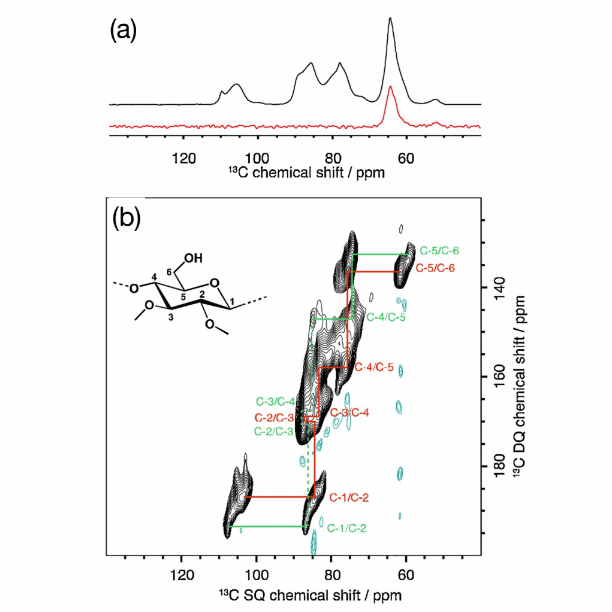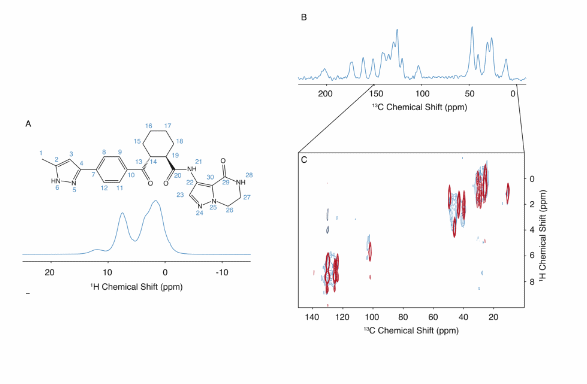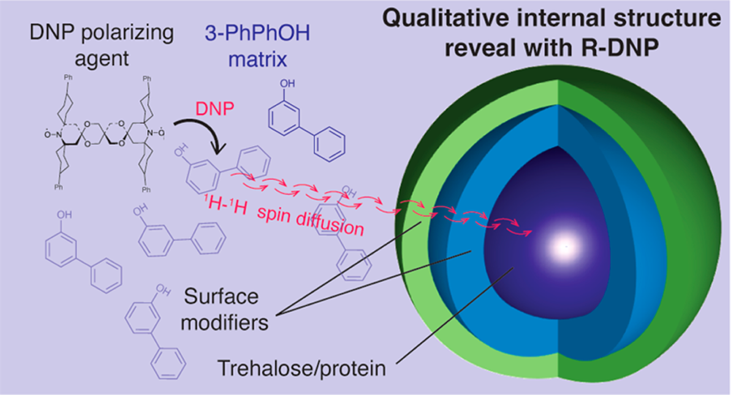DNP-enhanced NMR enables accurate identification of methyl substitution patterns in cellulose ethers, critical for polymer design. Two new NMR-based methods provide a more detailed understanding of regioselective substitutions, supporting better material performance. These findings have applications across multiple industries, including textiles, coatings, and pharmaceuticals, allowing for optimized material properties.
Atomic-level insight help in understanding how hydrogen bonding and molecular conformations stabilize amorphous drug forms. NMR Crystallography offers precise structural information, even for non-crystalline substances, helping to optimize drug formulation. The findings enable better stability and longer shelf-life for amorphous drugs, ensuring enhanced pharmaceutical efficacy.
Detailed insight into the internal structure of protein-based drug formulations enable better aerosol properties and stability. Advanced NMR Technology: DNP-enhanced NMR allows for the precise characterization of multicomponent formulations, supporting more efficient drug development.By understanding the layering of amino acids and their effects on dispersibility, more effective inhalable therapies can be created.
Atomic-level insight into aluminum pairing enables the design of more efficient zeolite catalysts.
Optimized catalysts lead to better performance in critical processes like methanol dehydration and NOx reduction, both key to the chemical and environmental industries.
2D NMR offers a precise method to visualize catalyst structures, helping tailor materials for higher efficiency and selectivity in reactions.
Improved Vaccine Design: By revealing how aluminum gels interact differently with antigens, this study provides unique insight that could be used to enhance vaccine efficacy.
The use of DNP-enhanced NMR opens new avenues for rapid and detailed analysis of complex interfaces, streamlining vaccine development.










